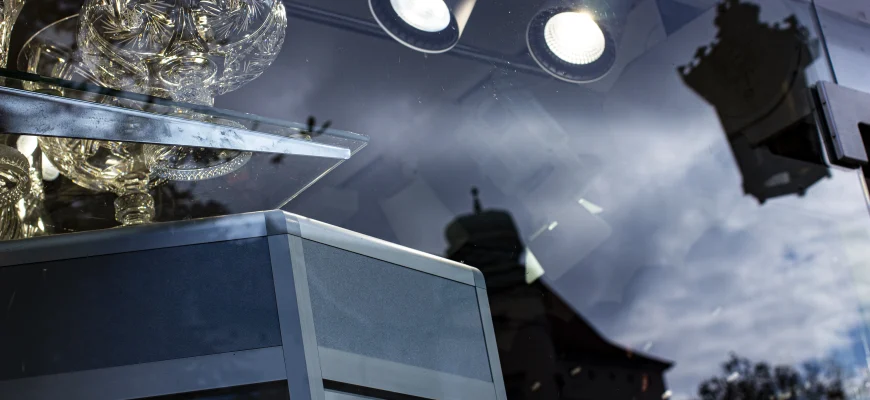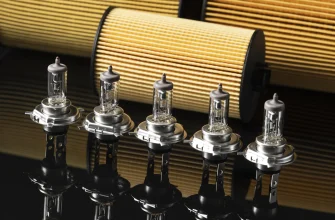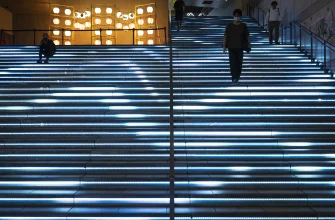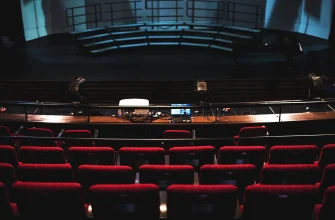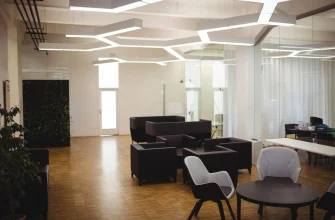Lighting for a jewelry store can be called, without exaggeration, a critical factor that directly affects the attractiveness of products for the customer. This, in turn, determines the commercial success of the enterprise as a whole. Side-by-side showcases with the same exposition but different illumination can produce different levels of sales.
Therefore, when organizing a lighting system in jewelry stores, maximum attention should be paid to its proper selection and placement.
The importance of proper lighting in jewelry stores
The jewelry market is always about luxury, exclusivity, and aristocracy. But you can’t rely on gemstones and metals to present themselves – lighting plays a key role in this.
If you choose or place the lamps incorrectly, it can lead to the opposite effect – jewelry loses its visual status due to insufficient lighting or the wrong direction of light.
The list of reasons why it is so important to pay attention to the lighting system includes the following:
- Presentability of the exposition. Jewelry is always precious stones and metals, which are characterized by an unusual glow, unique shimmer, and flicker. The right lighting enhances this effect many times over, emphasizing the beauty of rings, necklaces, tiaras and other jewelry, significantly increasing customer interest in buying.
- Correct color reproduction. Gemstones of the same group can differ in very slight color nuances, which makes them unique. The same goes for precious metals, whose shades depend on the characteristics of their alloy with other metals. Lighting should reproduce colors accurately and realistically so that the customer can correctly assess the quality and shade of the selected product.
- Emotional interaction with the customer. Lighting affects the overall atmosphere of a store or salon, and can make a customer feel cozy, luxurious, exclusive, trusting of the brand, etc., thus encouraging them to buy.
- Control over shadow and contrast. Correctly selected and installed lighting allows you to avoid too dense shadows or insufficient variety, which do not allow you to examine the jewelry in detail. This is especially true for jewelry with delicate, sophisticated and complex workmanship and designs that include small details.
- Security. Jewelry is an expensive product that requires a reliable security system. Proper lighting helps to improve the visibility of all areas in the store, the visibility of showcases and open displays, and the detail of what is happening during the inspection through CCTV cameras. This is important both for preventing theft and for creating a sense of security for customers while they are in the salon or store. Fire safety should also be taken into account: old-generation lamps that can get very hot can cause fire in finishing materials and damage jewelry.
The above factors make it clear that a jewelry store needs high-quality lighting. Experts will tell you how to make the right choice in favor of a particular lighting system and what to look for.
How to choose lighting for a jewelry store
Before you start choosing lighting fixtures for a jewelry store, you should divide the entire area into separate functional zones. These can be showcases, exhibition stands, cash desk area, common room and customer area. Each zone has its own lighting requirements.
Common area
In this area, the lighting should be warm (2700-3500K) to create an emotionally pleasant atmosphere. The power of each individual luminaire depends on the area of the room and the number of light points – the greater the distance between the luminaires, the more powerful they should be.
Luminous intensity is the most important criterion. It is calculated by the formula in which the sanitary standard in suites (for boutiques, salons, etc., it is 400-800 lux) is multiplied by the area of the room in square meters and by the ceiling height factor. The latter value is set depending on the height (2.5m-2.7m – the coefficient is 1, height 2.7m-3.0m – the coefficient is 1.2, etc.)
In the common room, luminaires with dimmers (devices that allow you to adjust the brightness of the lighting) will be very useful and effective. They provide precise adjustment and allow you to increase or dim the brightness depending on the time of day, natural light through the windows, the characteristics of the jewelry display, etc.
It is also important to take into account the reflectivity of the finishing materials. For glossy, metallized, and mirrored surfaces, the brightness standard can be reduced because the finish doubles the light flux. For light-absorbing materials (any textured wallpaper, fabrics, panels, etc.), the brightness level may need to be higher, or you may need to use rotary luminaires with a light flux focused on display cases or individual jewelry pieces.
Zonal lighting for a jewelry store
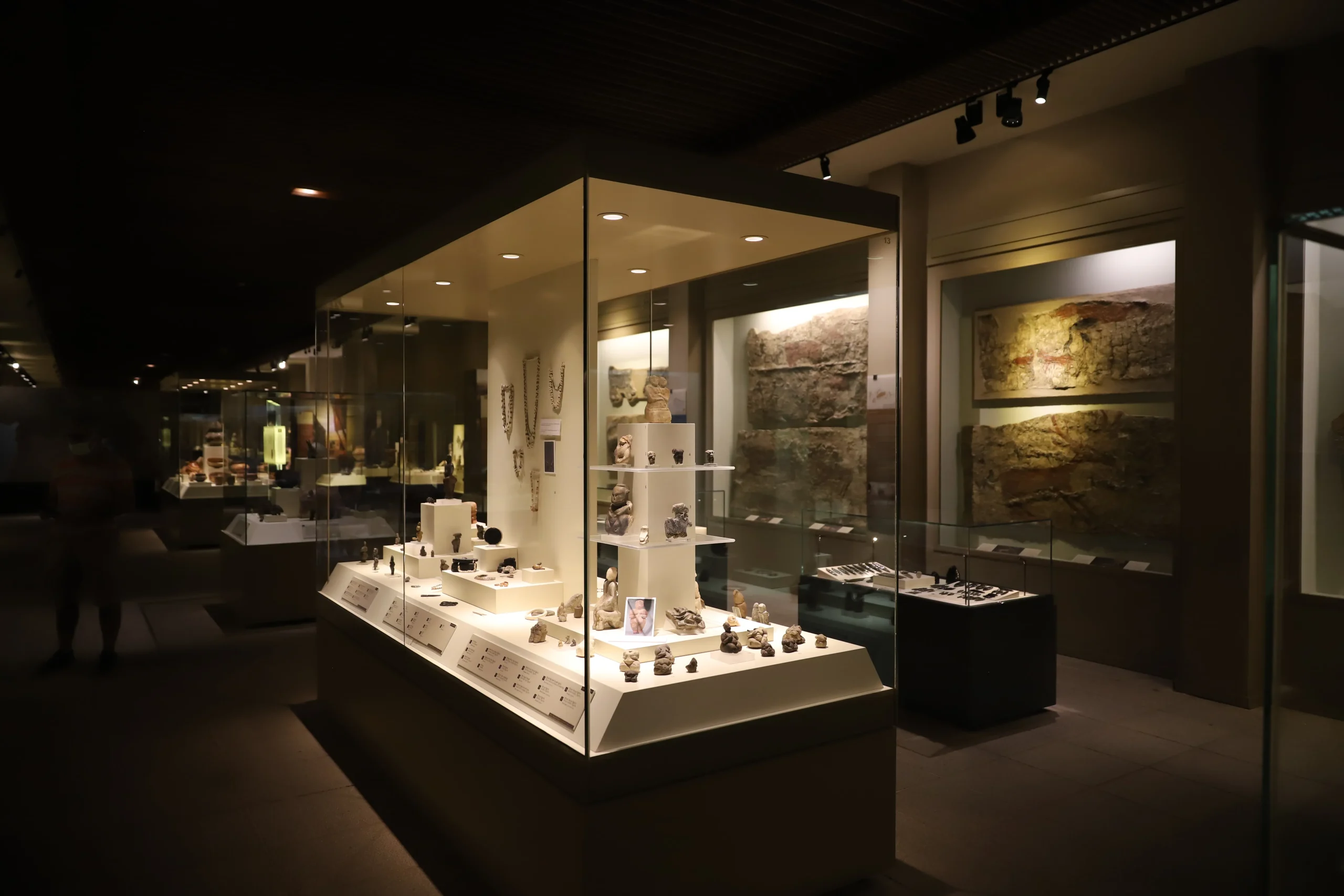
Zone lighting is fundamentally different from general lighting, as it is aimed at specific objects or areas, creating accents and emphasizing certain details. For each individual location of the jewelry store, you should think about the most comfortable and functional lighting system.
- Cash desk area. The optimal lighting brightness is 1500-2000 lux per 1 sq.m., neutral white light. It is recommended to use an independent overhead lamp (chandelier, spotlight, built-in spot, etc.) and a soft LED strip of the cash desk around the perimeter. You should also take into account the location of the surveillance camera – its lens should not be exposed to directional light, thus “lighting up” the image in the frame.
- Exhibition area. For closed showcases and open expositions (tabletop and wall-mounted tablets with jewelry, mannequins, etc.), brightness from 1500 to 2500 lux is recommended, with warm light. In closed-type displays, it is better to use hidden light sources and/or cradles and substrates located around the perimeter – such illumination of jewelry displays eliminates glare and provides an excellent view of all products. For this purpose, LED strips are the best choice. For decorative lighting, you should choose LED strips with 30-60 LEDs per 1 running meter. If the backlighting is to fully illuminate the display cases, it is optimal to use 60-120 LEDs per 1 linear meter.
- Customer area. In this location, the main role is played not by brightness and power, but by the adjustability of lighting and color temperature. Warm natural light is best suited to create a cozy atmosphere. The location of the lamps is wall, floor, or table (if there are coffee or service tables in the customer area).
It is also worth remembering about the convenience of visitors – staircase lamps will not only dilute the light on the descents, but also have a practical priority.
Accent lighting
Spotlights with swiveling shades are best suited for this purpose. If you need to visually highlight any piece of jewelry and draw the attention of customers to it, it is enough to direct a stream of light at it. Such lamps can be of ceiling, wall or floor (tripod) type. The latter is preferable in terms of economy and convenience – a few such lamps are enough for an average sales area, which can be adjusted without the use of ladders or other auxiliary devices, and if necessary, simply moved to another location. A more technologically advanced option is the remote-controlled luminaires, which, even when installed on the ceiling, can be easily adjusted at the touch of a button.
Also, colored lights should be considered as accent lighting. For example, the use of red lighting can be effective in drawing attention to special offers or new collections, creating a dramatic effect and highlighting specific products. Directional illumination with red, blue or other colors other than the main color effectively draws attention to the window or product and significantly increases customer interest.
General recommendations for choosing lighting in a jewelry store
Some aspects of lighting selection are universal for jewelry retail spaces of any type – shops, salons, boutiques, showrooms, etc., and of any size – from the smallest private businesses to large exhibition centers.
- Make a choice in favor of LED technology. LED lights are cost-effective, durable and energy efficient. Consuming a minimal amount of electricity, LEDs provide bright, stable lighting without power fluctuations and flickering. In addition, they retain their performance characteristics for several years, and their replacement does not require the involvement of specialists or the use of special tools. It is also important that LED lights do not heat up to high temperatures and do not heat the air, so they can be installed directly next to various surfaces without the risk of causing thermal deformation or other damage.
- Consider the color rendering index. The higher, the better (CRI of 90 and above). Such light does not distort the shades of stones and the color of metals, and allows customers to choose jewelry based on their real characteristics. Halogen lamps are still sometimes used in jewelry stores because they have a fairly high color index. But they tend to get very hot (and heat up the air), which requires the installation of powerful air conditioners and entails additional costs for electricity bills.
- Ensure uniform illumination of the sales area. To do this, think about the location of the lamps over the entire ceiling area and on the walls so that when they are on, they do not cast a shadow on the display cases and individual exhibits.
- Design a common dimming system for the sales area. This will allow you to adjust the brightness of the light flux without spending time and effort and thus create different visual and emotional effects.
- Vary the color temperature for each display case separately. Depending on the characteristics of the products placed in them, jewelry with diamonds and other transparent gemstones is most effective at a light temperature of 4000K to 6200K. And the aesthetics of gold, silver and platinum becomes especially refined at a temperature of 2000-3500K.
- Consider the matching of the design of the lamps to the interior of the store. Minimalist models with neutral-colored shades (metallic, black, white, gray) will be most appropriate. When organizing hidden lighting, you can use ceiling and floor shadow seam profiles. Such designs can enhance the aesthetics of the space and increase its status, which stimulates both the feeling of attractiveness of the store for customers and their interest in the jewelry exposition.
- Do not forget about the fitting area. The lighting around the perimeter of the mirror will reveal all the luxury and exclusivity of the jewelry that the client is trying on. The color of the light flux should be warm or neutral, and in no case cold.
Design experts recommend pre-determining the location of showcases, mannequins, customer and cash desk areas, and then designing the lighting system and thinking through every single aspect of it.
After installing all the fixtures, you should test the system and adjust the directionality, brightness, and temperature of the light in advance to achieve the light and visual effects you need.
The most rational solution is to involve specialists in the field of commercial lighting. This will help to avoid a number of common mistakes that reduce the attractiveness of the retail space for the buyer, negatively affect the business, and cause unnecessary costs for replacing lighting fixtures or redeveloping the premises.
And in order not to run around all the stores in search of lighting, go to our catalog. Here you can buy lamps and fixtures for a jewelry store at a very low cost: LED linear lamps for the hall, track systems and wall lamps for zoning, LED lamps and LED strip for illuminating shop windows.
